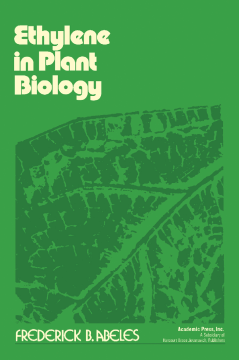
Additional Information
Book Details
Abstract
Ethylene in Plant Biology focuses on the role of ethylene in plant physiology and the interrelationship between ethylene, fruit ripening, and respiration. It summarizes the physiology, biochemistry, production, regulation, plant effects, metabolism, and mechanism of action of ethylene.
This book presents an introduction to basic chemistry of ethylene and available techniques for its sampling and analysis. Then, it discusses the rate, environmental conditions, and reactions involved in ethylene production. Chapter 4 examines the effects of herbicides and hormones, such as auxin, gibberellins, cytokinins, and abscisic acid, on ethylene production. Meanwhile, the next chapter studies the so-called stress ethylene phenomenon in plants. In particular, this book examines the role of insects, temperature, water, gamma-irradiation, and mechanical and chemical stimuli in stress ethylene. The biochemical aspects of ethylene are covered in the subsequent chapters. These include its role in growth and development of plant, phytogerontological activity, role in ethylene synthesis, respiration, pigmentation, and hormone regulation. Chapter 9 presents the activity of ethylene relative to other hydrocarbon analogs and dose-response relationships for a number of ethylene-mediated processes. The concluding chapters tackle the attachment of ethylene to its site of action, including epinasty, root initiation, intumescence formation, and floral initiation. A discussion on the issue of ethylene air pollution is included.
This book will be useful to both undergraduate students and professional workers, especially those who have background in plant anatomy, plant physiology, or biochemistry.
